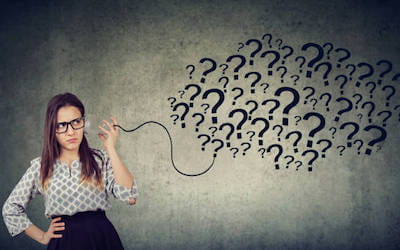
Publication summary – “Acoustic Injustice”
Helen and I recently published an article called Acoustic injustice: The experience of listening to indistinct covert recordings presented as evidence in court. The reason for the title is that the paper appears in The Acoustics of Justice: Law, Listening, Sound, a special issue of the journal Law, Text, Culture edited by James Parker, Sara Ramshaw and Mehera San Roque. You can read our paper here and you can access the other papers in the special issue here. We have also put the abstract to the article further below.
Fraser & Loakes (2020) is a “mythbusting” article about the experience of listening to indistinct audio with legally sanctioned forms of assistance, and the actual effects of this assistance on perception of the content of the recording, as understood via perceptual phonetics and psycholinguistics. Our audience is lawyers and others who work with indistinct audio in criminal trials. It is likely also to be of interest to students and colleagues in phonetics, as it shows an important way that our science can be used and misused – and what we can learn by exploring what works well in court and what creates problems. While the article has only just come out now, it has a 2020 publication date because the pandemic delayed publication.
Our article is about how listening to covertly made audio recordings in court is a powerful experience, because it offers the opportunity to hear individuals make admissions that they would not be prepared to make openly. However, we also talk about how there is the potential for this experience to be “powerfully misleading” (Fraser & Loakes 2020: 405) due to the nature of these recordings which are often extremely indistinct, and the fact that it is not necessarily clear who is speaking. Our article explains the reasons for the problems from the point of view of phonetic science.

Helen and I also talk in our article about how the way we hear is strongly dependent on proficiency and experience (also see Cutler 2012), giving the following examples:
- A research paper I wrote with colleagues shows people in Warrnambool (south-west Vic) compared with people in Albury Wodonga (Vic-NSW border town) process certain sounds differently (Loakes, Hajek, Clothier & Fletcher 2014);
- Words which sound clear in a recorded conversation are not comprehensible when excised and played to listeners (Shockey 2013); and
- People often use visual information to “scaffold” what they think they are hearing – we give the example of the McGurk effect where people have their perception altered by simply seeing mismatching visual stimuli. As we say in our article, we really recommend experiencing this in multimedia.
The Research Hub for Language in Forensic Evidence was founded because of the very issues outlined in Fraser & Loakes (2020). Our collaborative research program with law and law enforcement, as well as linguistics, is dedicated to these issues.
We would also like to draw attention to the fact that our 2020 Honours student Conor Clements conducted some research in 2020 on the topics of what was said and who said it, and recently wrote a blog post related to these matters (also please note there are further references and links within that you can follow).
And finally, here is another link to our article.
Article abstract
Audio recorded by hidden listening devices can provide powerful evidence in criminal trials. Unfortunately these covert recordings are often indistinct, to the extent the court needs a transcript to understand the content. Australian law allows police to provide transcripts as ‘ad hoc experts’. Legal procedures incorporate safeguards intended to ensure the transcripts are not misleading. The problem is that these safeguards have been shown to be ineffective, with multiple examples of inaccurate transcripts being provided to ‘assist’ the jury in determining what is said and who is saying it. The present paper explains the problem, provides an accessible overview of the nature of speech and how speech perception works, and outlines the solution proposed by the Research Hub for Language in Forensic Evidence to the ‘acoustic injustice’ embodied in current legal procedures.
References
Cutler, A. (2012). Native listening: Language experience and the recognition of spoken words Cambridge: MIT Press.
Fraser, H. and D. Loakes (2020). Acoustic injustice: The experience of listening to indistinct covert recordings presented as evidence in court, Law Text Culture, 24, 405-429.
Loakes D. J. Hajek J. Clothier and J. Fletcher (2014). Identifying /el/-/æl/: A comparison between two regional Australian towns in J. Hay and E. Parnell (Eds.) Proceedings of the 15th Australasian International Conference on Speech Science and Technology, Canterbury: ASSTA. 41-44.
Parker, J., S. Ramshaw, and M. San Roque (2020). Contents & Introduction, Law Text Culture Law Text Culture, 24, 1-8.
Shockey, L. (2003) Sound patterns of spoken English Oxford: Blackwell.